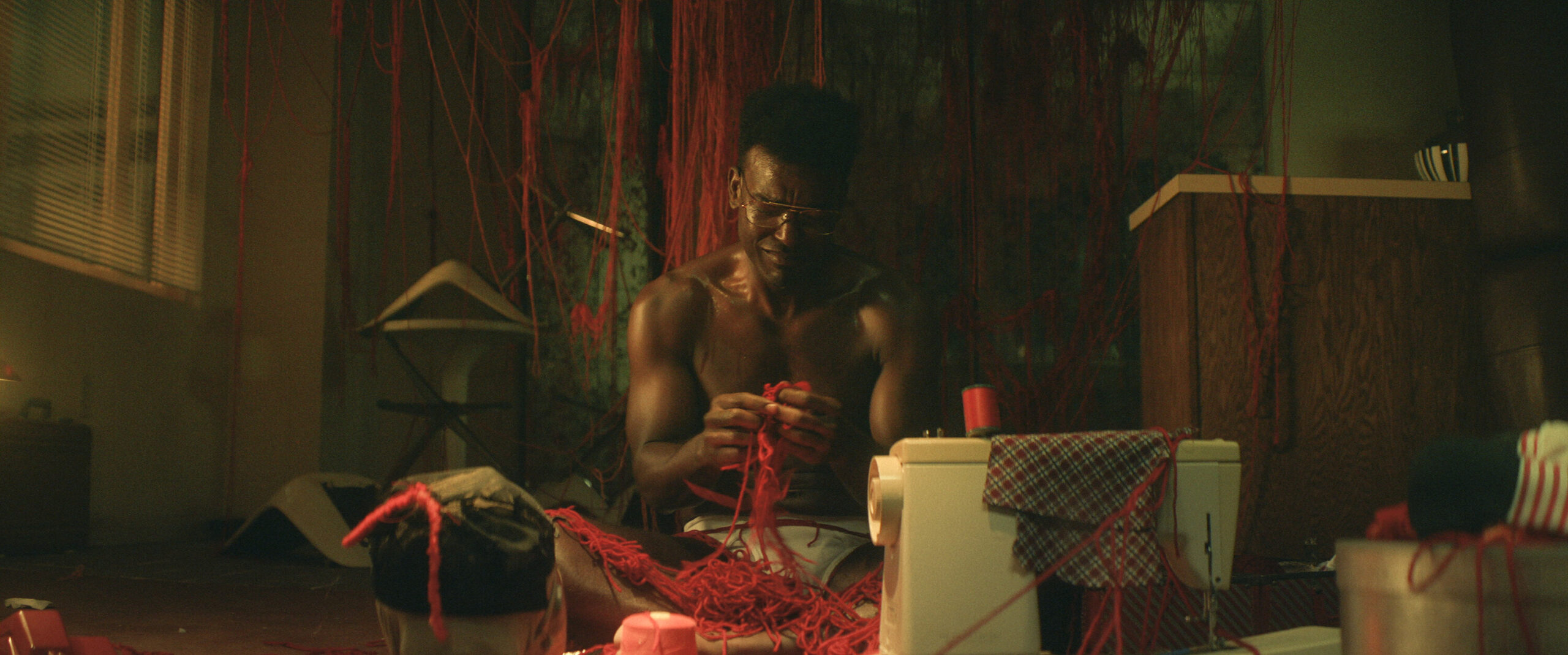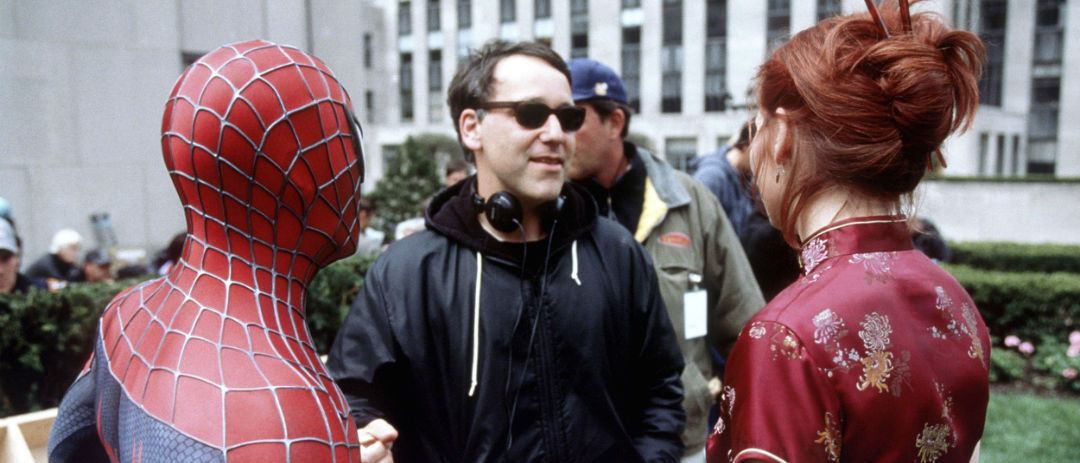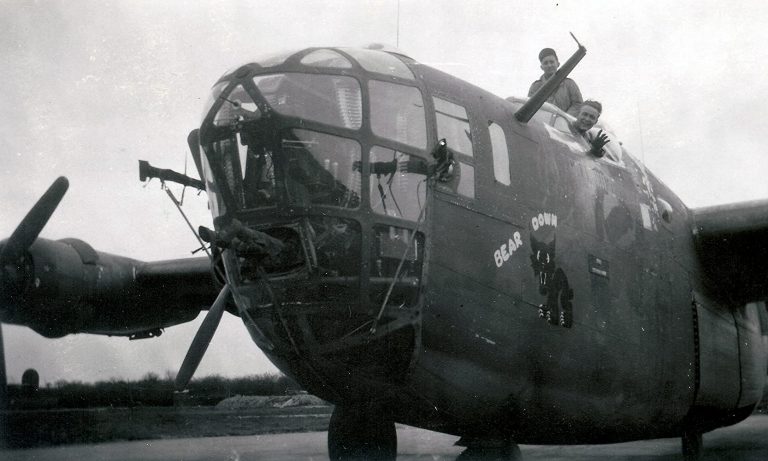
Return to Hardwick documentary tells a story of World War II through the eyes of the veteran’s children and grandchildren.
With the catastrophic event nearly seventy-five years ago, a few of the veterans are alive today to tell the stories of bravery and horror of the war. Documentarian Michael Sellers retold the story of the 93rd Bomb Squadron with the descendants’ perspectives at their annual Hardwick reunions.
LRM Online spoke to director Michael Sellers over the phone exclusively about this documentary. We talked mainly about the reunions, Hardwick airbase, and some of the stories of that generation.
Here’s the official synopsis:
The 93rd Bomb Group was arguably the most decorated, most traveled, and most effective bomb group of WWII. Helping to cripple Hitler’s Europe from the air, they executed some of the most daring bombing raids in the war. Along with the group’s rich history, sons, daughters, and grandchildren travel to England and explore the 93rd’s long-forgotten airbase—Hardwick.
Michael Cudlitz (Band of Brothers, The Walking Dead) provided the narration for the film.
Return to Hardwick is currently available digitally today.
Read the full interview below:
Gig Patta: Are you in what England right now?
Michael Sellers: No, I live in Brooklyn, New York.
Gig Patta: Oh, Brooklyn. I was way off. You’re on this side of The Pond. [Laughs]
Michael Sellers: You’re very off. That’s true—a big pond.
Gig Patta: Congratulations on your documentary Return to Hardwick. You must be very excited about this project is finally released.
Michael Sellers: It’s even the fact that it is released. To start, it was sort of an internal project within the group and for them to maybe see an opportunity that it could go bigger. Would we think that we would be in this position a couple of years ago? I don’t think so. It’s to be able to have a distribution company take interest and see the quality in some of the stories in the film. We can’t beat it.
Gig Patta: Tell me what initiated you even to do a project like this?
Michael Sellers: As I’ve told a lot of people, it starts with my grandfather. My grandfather was a Bombardier navigator and the 93rd Bomb Group, which the 93rd as in the film. It was stationed in England during World War II. So he would always go to reunions.
At one point, he invited me, and I got super interested. I had gone to reunions with him for a while after that. I got connected to the guys, the people, and the families that are going to these reunions. It’s just hard not to keep in touch. You see them every year. This project came up as something that they need to do to stay viable. They’re a nonprofit organization, so they’ve done many projects in the past. This film was the next big one that they wanted to try to do. That’s how it started.
Gig Patta: Which year and which reunion did you decide to pick up the camera and start filming?
Michael Sellers: Well, there’s been multiple times, but 2001 was the first one that was a reunion back to England. I say back to because my grandfather and grandmother had been going since the seventies after the war. They’d been deeply involved in going to those reunions. I caught up with them around 2001, and that was a full weeklong reunion in England. It brought us to the town of Norwich, in and out of places there, for dedications, for memorials and then eventually to Hardwick, the airbase. How better can you see the base where he was stationed? That’s where I got the bug. Since then, I’ve picked up the camera for all these reunions.
Some of the interviews in the film were dated back to 2008 and 2009. I had dug back into those videos for this film to incorporate those interviews. These guys are older, and unfortunately, some do pass away. We still do have a few of them left with us that do go to reunions. I got to shoot these guys and capture them in an archive that video. It’s the 2015 reunion in the movie for which when the actual trip to Hardwick happened. I picked up a better camera and got more footage for the film now.
Gig Patta: Since you said it was a weeklong event with the trip in England. What kind of preparations did you have? To film a documentary, most people take months and years to handle it, but you only had a weeklong window.
Michael Sellers: Actually, I had shorter than that. The part in the film shot back in 2015 with the actual people was a three-day trip. Then I stayed a couple of days after to get supporting footage B-roll footage. We had special access to the airbase to shoot stuff. I do have some shots where our historian and guide is standing near the spot where the tower used to be for Hardwick airfield. We were able to get that access at that point.
So, yes, that’s about a four-day, five-day run that I had there to shoot. A lot of the interviews were done when I came back to the United States in subsequent years. I would call somebody up and say, “Hey, you went on that trip. Can I come and interview you? Or you’re an expert on the 93rd and the Air Force. Can you, can I interview you?” For many years after that, I’d have to kind of pick these interviews and go to.
Gig Patta: Was it easy to convince these subjects to do the interviews? I could imagine they have plenty of stories to tell. Then again, we’re also talking about war wounds for some of them.
Michael Sellers: Yeah, that’s a good question. Most of the people, we’re talking about veterans that go to the reunions, they want to be there. No one’s forcing them. They’re bringing family members. You’ve got a pretty good chance if you go to a reunion, you’re going to be able to turn your camera on and get some stories.
There are a few veterans that maybe opt-out, even though they do go to the reunion. But, most of the subjects will get on camera and talk. Of course, nobody’s forcing these guys. We don’t want to bring back bad memories if they don’t want to talk about it.
Some veterans hadn’t gone to the reunions, but they had high positions on the base. Maybe they had inside information. I would then seek them out and go to their home for an interview. That happened to a few of the veterans.
For most of them, you could tell from the beginning if they’re interested in an interview. If you do put the word out, especially at a reunion, you’ll gather interest. We’ve got a room set up, so on come by. That’s how that works.
Gig Patta: How much participation did the historical organization for the reunion helped you out?
Michael Sellers: Are we talking about the 93rd bomb group specifically?
Gig Patta: Yes.
Michael Sellers: Yeah, it was an immense help. If you can understand how this film was made that it was created through the organization. We didn’t go to a typical crowdfunding website like Indiegogo or Kickstarter. We didn’t have a rich uncle to give us maybe some money. All this money was funneled through by fundraisers through the 93rd organization. A lot of this was through family members and the veterans themselves.
Over multiple years, we said, “Hey, we’re working on this film.” I would edit along that time. Every time a reunion would pop up, I’d have 20 minutes of footage to watch. Next reunion, I had about 40 minutes of footage to watch. People would give comments and concerns about things that maybe they want to see in there. I would take that in as notes.
There are almost a hundred thousand dollars raised by this veteran’s organization alone to produce this film. That’s what it took to get it out there. So they own it. I volunteered my time to work on it. A lot of it was done for my grandfather for his participation in 93rd.
ALSO READ: Dads Documentary Trailer Shows A Perfect Father’s Day Film Tribute On Apple TV+
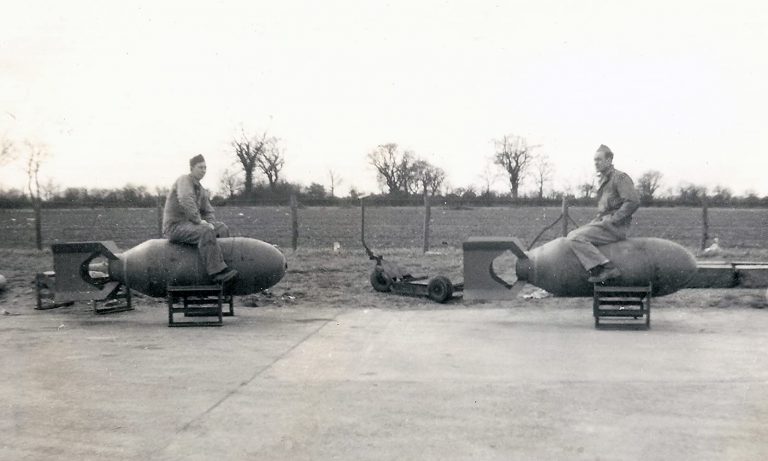
Gig Patta: A lot of us don’t know where Hardwick is, but could you describe the area of Hardwick? Is this near a small countryside town or around a major metropolitan today?
Michael Sellers: Technically, Hardwick is only named for the airbase that was there. People have little signs out says “Hardwick airfield this way,” but that was only during the war. There is a town Hardwick that is a few miles from the base. It may be named since that town was over there, possibly. Most of these airbases were British airbases first. Then the Americans came in and took some of them over. They started to build more planes, more materials, and more equipment. When the Americans arrived, the British said, “Okay, take this one over. Put all your machines over here with your aircrafts.”
Hardwick is one of the small towns nearby. Even closer as a town, I say town, but they’re called villages. One of the villages is Topcroft. You’re talking about a village where everyone knows their neighbor. These are small homes in small neighborhoods. Maybe a few hundred people live in that area. Perhaps a little more. The biggest town that would be close to all these little villages is Norwich. So Norwich is a pretty big city in England.
Gig Patta: If I stand on the base of Hardwick today, what do I see besides the remnants of the runway?
Michael Sellers: You’re going to see farmland. It all returned before the base was built as farmland before the base was built. The airfield did its job. Currently, I believe, four different owners that have sectioned out the base and for their farms where the base used to be. I do show that in the film, pretty distinctly, on how this turned back into farmland. They need to do business. They need to work. That’s a lot of what after the war people were doing, is just getting back to work. So that’s pretty much what you would see.
Gig Patta: Was it difficult to recreate or re-imagine the base through computer animation in your film?
Michael Sellers: The only computer part, win which I re-used a few times, is a 3D visualization of one section at the end of one of the runways. It still exists today. I thought it would be cool as the drone was going up, we map out the land and then start laying in the wartime airbase.
I had a friend who worked on that with me. He’s here in New York and works on a lot of big projects. He said that he could take this on as a side project. We did end up paying him, but it was probably pennies compared to what it would cost. He went through and mapped the entire base from photographs that existed back during the war and put the buildings where they needed to be. We filled it with aircraft as if they were coming down the taxiway or the runway.
That was very cool because he matched it to the drone shot. It’s a simple wave dissolve that comes over it, and then you’re back in wartime. Everything else in the film, for the most part, is all dissolves. It’s all from today with a drone shot then to what the photo was back during the war. It’s just a simple trick like that.
Gig Patta: I want to discuss the narratives of the stories that you included in your documentary. For example, the bomber crashed. That story was fascinating and interesting. Did you just rely on the accounts? Is there still a crater there today?
Michael Sellers: First of all, there is no crater there today. A lot of this was taken over by farmland. Of course, at the time when it happened, there was a huge crater there. John Marks is the nephew of Robert Marks. Robert Marks was the one piloting that plane that day in December, and that plane crashed. They believed that aircraft, with factual evidence, was supposed to fly off and help during the Battle of the Bulge. The weather that day–during that winter was very rough. It was one of the harshest on record. At the time, they said it was the weather, pilot error, or hit a tree. All we knew that it crashed and went down. I don’t get into a lot of the details because the details get muddled.
I do start with John Marks, who’s the nephew. Over the years of investigation, he was just obsessed with what happened to this plane because that was his uncle. I do tell a little bit in the story of how he went through that since he’s former military himself in the army. He had some access to people about details of that records from back during the war. It was fascinating to be able to go and interview him and just find out how many times he has been back. He brings his family back to the cross that he put there to memorialize the crash. It’s pretty fascinating.
Gig Patta: Well, you also played historian documenting their campaigns into North Africa and Eastern Europe. Could you talk about your approach to those stories?
Michael Sellers: There’s a book called “Ted’s Traveling Circus.” Carroll Stewart wrote that fascinating historical book. Carroll Stewart was a stalwart on the base during the war. His book was a great resource and still is today for the 93rd, precisely what they did on every mission since they started. The 93rd in the Eighth Air Force did the most missions. They did 396 missions. His book chronicles all of that.
That’s a real resource for me to be able to open up and get to those Africa campaigns. They were sent to Africa three different times. It was a lot about the campaigning down there to push the Germans out because the Germans had entered Africa and started taking over parts of that area. They were brought in. Since they were one of the first B-24 bombers in England, they were basically on the list. The servicemen were told, “Well, you guys have been here for a while. So why don’t you go down and help out?”
One of the biggest campaigns was with their second deployment to Africa. In that campaign, it entailed a few small missions, but one of the big missions was Operation Tidal Wave. It was top secret at the time. That operation was to destroy the oil fields in Romania. And the 93rd was on that mission with four other bomber groups. Two things went wrong, as I explained in the film. You can pick up the book on Amazon, which details what happened during that mission. There were casualties and POWs were taken. 79 POWs were returned. That’s a whole other story in itself of how they were rescued.
Gig Patta: That’s a unique perspective. I’m glad you included it. I’m saying that because I love history. [Laughs]
Michael Sellers: Yeah, good. Well, that’s what it’s about. This film is made just for you. That’s what I tell everybody on Facebook or people that I encounter. Some people are not going to like it. They’re not a history buff, or war stories are not for them. I tried to incorporate those characters as you were bringing up into the film so that we can take it from a second-generation or a third-generation perspective.
Gig Patta: The most surprising story was with George Jung’s father’s participation with the bombing squad. I didn’t know that there were any Asian-Americans who fought on our side due to the Japanese. Could you talk about that?
Michael Sellers: George is Chinese. His father was Chinese. They did have Asian-Americans entered the war. A few did go into the battle in many different departments of the war. One of the more famous Asian-Americans was with Ben Kuroki. He was Japanese-American. You could look up his history, which was a fascinating, important part of history.
The problem with a film like this is as you start to dive into the questions and the interest in that subject–the film becomes super huge. One of my focuses was to try to stick to the second and third-generation members that are trying to see through the eyes of what’s left of the base and going back in discovery. I had fought a lot with myself on do I include a section of Ben Kuroki? Do I go deeper into George’s father?
I decided not to because it wouldn’t do justice in this film. There is a PBS documentary called The Most Honorable Son, which was done probably about 15 years ago on Ben Kuroki specifically. There is already a movie out about Ben. It represents his trials and works through the military at that time. It’s one of the things I looked at if I could have fit it in, but I just don’t think I had enough time.
ALSO READ: Watch The First 10 Minutes Of The Documentary The Skywalker Legacy
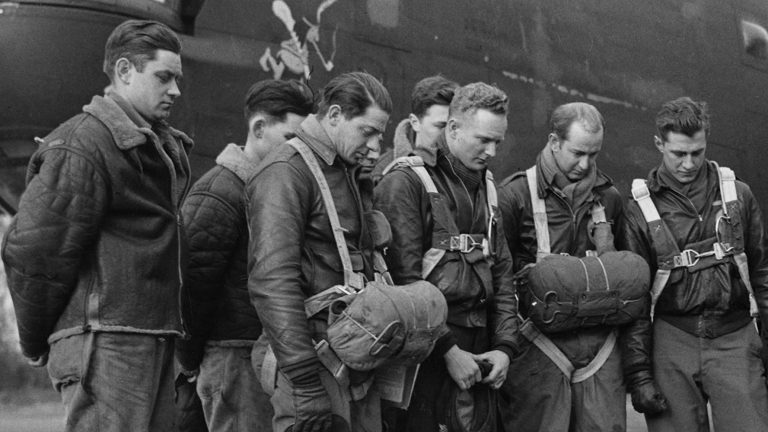
Gig Patta: You made an interesting choice to feminize the film a little bit. It could easily be a male-dominated narrative. You included the story of the nurse who worked the base.
Michael Sellers: Gail [Mailloux] is the daughter. Um, Helen is the mother. Charles was the father. Uh, Gail’s story was exciting because I didn’t know Gail before the trip. The trip that you see in the film–that’s the first time I’m meeting her. As you do, in documentaries, you find your story. For this one, I found it because she would just talk to me about the letters that she had, telling me about photos, on how her mother was on the base, and then her father was on the base. I was like, “Wait, wait. You got to tell me what’s going on here. So your parents met?” She gave me this whole story of what was going on. It started coming to the top as far as what was going to be profiled in the film.
The other thing is Gail lives somewhat close to my parents in Missouri. If I needed to, by visiting my parents, I could drive down and get some interviews. One interview, sometimes, doesn’t do it. I would have to see her a couple of times over the editing of this project. When you hear a story like that, you’re able to dig a little deeper. Then she started sending me the photos. She started sending me the letters. I’m like, “We’ve got something here.” We need to focus on this.
Gig Patta: How did you score Michael Cudlitz as your narrator?
Michael Sellers: Good question. It’s funny. We’ve done film festivals, or we’ve gone to museums, in which he’s gone with me a few times, that question always comes up. He likes to say, “Oh, I think a friend of a friend of the group and my son’s godfather contacted me.” [Laughs] He’s got a story of it.
We have a story about it. It’s a friend within the 93rd, who is also the president of the group. He reached out to a friend who’s a publicist. Then that guy reached out to another friend that was connected to Michael Cudlitz. Eventually, Michael got back to me on a phone call. That’s the way it happened in a telephone tag. Michael called up and said, “Hey, I heard you got something. I’d be interested in helping you out.” Michael was very humble about it, and he wanted to help out any way he could.
Gig Patta: That was a great connection.
Michael Sellers: In the beginning, I didn’t know how much he wanted to talk about his Band of Brothers experience. We didn’t know whether he was comfortable talking about it, or if he was done with that project. He is full-on with those stories by enjoying talking about that project. He had the greatest time there. People do bring it up at screenings and discuss it with him. He’ll go on for a while and talk about his experiences. Then he’ll loop the conversation back around to what he’s doing with us. He would say, “The band of brothers, hundred first, they were on the ground. But, the 93rd was up in the air.” He feels he’s pushing on his help with these different groups.
Gig Patta: What is the most excellent story that your grandfather ever told you?
Michael Sellers: Concerning the war, and I’ve heard this one a few times growing up, it was with his second to last mission. When my grandfather got there, he was only assigned 25 missions. That’s if you survive. At one point, it went up to 30 missions. They said, “No, you got to do five more.” By the time he was wrapping up that, they said, “Nope, you got to do five more.” It ended up being 35 missions. The second to last, or the 34th mission, they got shot up badly. Their plane was shot up so badly that they didn’t think they were going to make it back to England.
At one point, when they were getting shot up, he looked at his ADI, and it was red all over like blood. The other guys on the plane didn’t know what was going on. Everything happened so fast. It took him a couple of seconds to realize that it wasn’t blood, but it was hydraulic fluid. When you see that fluid on yourself, you’re in shock. You don’t know what happened. You hear a lot of noise, and you think you’re hurt. After checking himself, he wasn’t hit anywhere. He got lucky on the plane. Nobody in the aircraft died that day.
They were wounded, but they did make it back to an auxiliary base. The aircraft went to a place called Woodbridge and landed their plane there with some problems. They were able to land it and get out. Then he did his 35th mission. It was a pretty simple mission that day. That’s a story I always remember him telling me.
Gig Patta: Well, I’m glad he survived because he brought you into this world eventually to make this documentary. [Laughs]
Michael Sellers: He did. And I think about it every day. When I’m sitting there editing late at night, and I feel like I’m never going to get it done–I said, “He could go through all that and wake up every day knowing that it may be his last day. I could sit here in front of his edit machine and get this thing done.” That’s what kept me going to get the project out.
ALSO READ: TRIUMPH: Unidos En Fuerza Documentary First Trailer
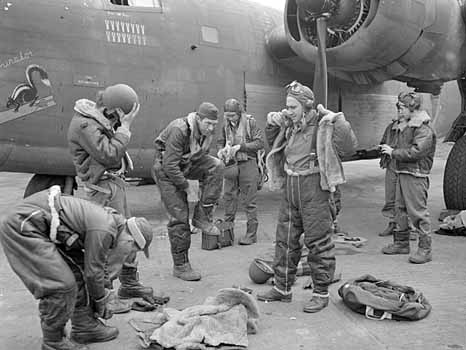
Gig Patta: Let me wrap it up with one more question. As audiences checkout Return to Hardwick, what is the one most important lesson that you hope that they could take away?
Michael Sellers: The best lesson is to know why we did what we did. It’s a little bit cliché. You can get into good versus evil, but people were dying. At that time, we’re talking about 70 plus years ago, the US at first didn’t want to get involved. We’ve been through one significant war before. The Great Depression was not good for us. We’re going to try to back off and not get involved. When Pearl Harbor happened, and we started getting pushed around, it looked like things were ramping up to be bad for everybody.
Now, look how much everyone came together to make all the machines that needed to be made. They had to get all the people to volunteer to get in there. You could have the draft, but a lot of people, like my grandfather, just signed up. It’s about coming together.
It’s that unity, that family of everyone, seeing this one goal. In the end, when you look at the concentration camps, and you look at all this horror that was going on, you realize that you did it for the right reason. That’s what it’s about. Today with so much intel and so much information, that’s important. It’s about unity and coming together. That would be my number one answer.
Gig Patta: Hey, congratulations once again with Return to Hardwick. I look forward to your next project.
Michael Sellers: Thank you for the interview. It’s very nice of you.
Return to Hardwick is currently available digitally today.
Source: LRM Online, Gravitas Ventures

 FOR FANBOYS, BY FANBOYS
Have you checked out LRM Online’s official podcasts and videos on The Genreverse Podcast Network? Available on YouTube and all your favorite podcast apps, This multimedia empire includes The Daily CoG, Breaking Geek Radio: The Podcast, GeekScholars Movie News, Anime-Versal Review Podcast, and our Star Wars dedicated podcast The Cantina. Check it out by listening on all your favorite podcast apps, or watching on YouTube!
Subscribe on: Apple Podcasts | Spotify | SoundCloud | Stitcher | Google Play
FOR FANBOYS, BY FANBOYS
Have you checked out LRM Online’s official podcasts and videos on The Genreverse Podcast Network? Available on YouTube and all your favorite podcast apps, This multimedia empire includes The Daily CoG, Breaking Geek Radio: The Podcast, GeekScholars Movie News, Anime-Versal Review Podcast, and our Star Wars dedicated podcast The Cantina. Check it out by listening on all your favorite podcast apps, or watching on YouTube!
Subscribe on: Apple Podcasts | Spotify | SoundCloud | Stitcher | Google Play

